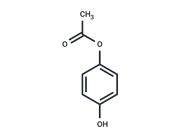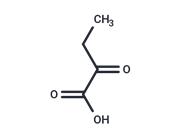| Name | Lonafarnib |
| Description | Lonafarnib (Sch66336) is an orally bioavailable FPTase inhibitor for H-ras, K-ras-4B, and N-ras (IC50: 1.9/5.2/2.8 nM). |
| Cell Research | The cells are seeded in 96-well cell-culture cluster plates at a density that allowed control cultures to grow exponentially for 5 days. After 24 hours, the cells are treated with different concentrations of SCH66336. SCH66336 is dissolved in DMSO. Control cultures received the same amount of DMSO as the treated cultures do. Cell numbers are estimated after 5 days of treatment by SRB assay. The percentage of growth inhibition is calculated by using the equation: percentage growth inhibition = (1 ? At/Ac) × 100, where At and Ac represent the absorbance in treated and control cultures, respectively. The drug concentration causing a 50% cell growth inhibition (IC50), is determined by interpolation from dose-response curves.(Only for Reference) |
| Kinase Assay | FPTactivity is determined by measuring the transfer of [3H]farnesyl from [3H]farnesyl PPi to trichloroacetic acid-precipitable Ha-Ras-CVLS. GGPT-1 activity is similarly determined using [3H]geranylgeranyl diphosphate and Ha-Ras-CVLL as substrates[1]. |
| In vitro | SCH66336 at concentration ranging from 0.1 μM to 8 μM suppress growth and induce apoptosis of human head and neck squamous carcinoma cells (HNSCC) in a dose and time dependent manner. SCH66336 (8 μM) suppresses protein kinase B/Akt activity as well as the phosphorylation of the Akt substrates glycogen synthase kinase (GSK)-3β, forkhead transcription factor, and BAD in SqCC/Y1 cells. [2] SCH66336 demonstrate variable antiproliferative effects against the cell lines, with IC50 ranging from 0.6 μM to 32.3 μM. [3] Lonafarnib induces a CCAAT/enhancer-binding protein homologous protein (CHOP)-dependent transactivation of the DR5 promoter, thus induces CHOP-dependent DR5 up-regulation. Lonafarnib (< 10 μM) activates caspase-8 and its downstream caspases, thus induces caspase-8-dependent apoptosis in H1792 cells. Lonafarnib (5 μM) up-regulate DR5 expression, increase cell-surface DR5 distribution, and enhance tumor necrosis factor-related apoptosis-inducing ligand-induced apoptosis in H1792 cells.[4] |
| In vivo | Lonafarnib inhibits HTBI77 human lung carcinoma xenograft growth in nude mice in a dose-dependent fashion. [1] Lonafarnib dosed at 50 mg/kg p.o. bid by oral gavage inhibits tumor growth with up to 69% growth inhibition after 21 days of treatment in NOD/SCID mice bearing s.c. flank XEN01, XEN05 or XEN08 GBM xenografts. [3] |
| Storage | Powder: -20°C for 3 years | In solvent: -80°C for 1 year | Shipping with blue ice. |
| Solubility Information | DMSO : 10 mg/mL (15.6 mM), Sonication is recommended.
|
| Keywords | Ras | Inhibitor | Sch-66336 | Sch 66336 | inhibit | Farnesyl Transferase | Ftase | Autophagy | Lonafarnib |
| Inhibitors Related | Hydroxychloroquine | Guanidine hydrochloride |
| Related Compound Libraries | Bioactive Compound Library | Membrane Protein-targeted Compound Library | Kinase Inhibitor Library | Drug Repurposing Compound Library | Inhibitor Library | FDA-Approved Drug Library | GPCR Compound Library | Anti-Cancer Active Compound Library |

 United States
United States



